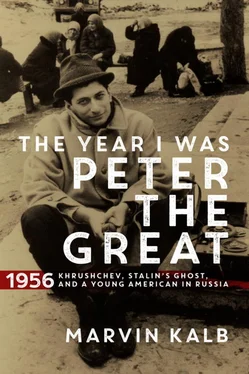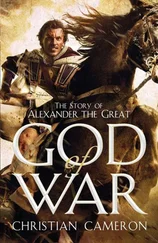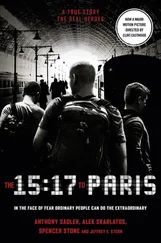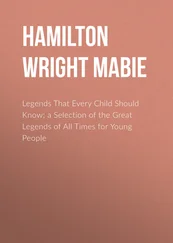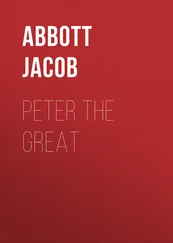That night I bounced the idea of a “peaceful revolution” off a young woman I had met at the Lenin Library. She offered her own refreshing definition. “Now we are not afraid to think or ask questions,” she said, but there were “limits.”
* * *
Troubles in Poznan, Poland, were big news in most parts of the world, but in the Soviet Union there was just a short item on the back page of Pravda . It was also symptomatic of Khrushchev’s growing concern that the anti-party agitation spreading through Russia was now beginning to spread through Eastern Europe as well. The news, as portrayed by Pravda , was that “a broad and carefully prepared provocative, diversionary action” had disrupted an international fair in Poland, leading to its “destruction.” The message, in Pravda -ese, was clear. Anti-communists were behind the destruction; they were on a reckless rampage against state authority, and they had to be crushed. Fortunately I did not have to depend on Pravda . In addition I had access to the Voice of America, the International Herald Tribune , embassy reports, and diplomatic chatter that I was able to pick up at JPRS.
What I learned at the time was that the trouble started early Thursday morning, June 28, when angry workers (no one was sure of exact numbers) converged on Poznan’s City Square, demanding better living conditions. The demonstration began peacefully but soon turned violent. I noted in my diary, “Workers attacked Communist Party headquarters. The prison was torched. Trams were overturned. Soon, shooting was heard, and tanks were seen lumbering through the streets of Poznan. Armed soldiers appeared on the streets shortly thereafter. All communications to the town were cut, and aircraft diverted to other points.”
What I learned at the U.S. embassy was that many thousands of workers had demonstrated, at first calmly but then, after a while, going on the attack. One foreign observer recalled, “As the sound of their steps intensified, so did the temperature of emotions. Such a mood is like dynamite. Any spark becomes dangerous.” Soon the demonstrating workers, demanding “bread and freedom,” began to shout anti-communist and anti-Soviet slogans.
“We want a Free Poland.”
“Down with Bolshevism.”
“Down with the Russians.”
“We demand free elections under the UN.”
“We want God.”
“We demand religious classes in schools.”
Hearing the slogans, seeing the chaos, fearful of the proletarian workers they claimed to represent, Polish communist leaders, encouraged by the Russians, ordered two infantry divisions and two armored divisions, totaling more than 360 tanks and 10,000 troops, into the City Square, where they smashed the uprising, killing more than 70 workers and residents and wounding hundreds of others.
Was it an “uprising,” a “revolt,” or a “rebellion”? Poles argued about a proper term for many years. Russians at the time preferred the word “provocation.” A Russian professor, probably a member of the party but one deeply disturbed by the revelations flowing from Khrushchev’s speech, told me that “there are really two histories. One is ours—what we read in our papers. The other is yours, the kind we cannot read. I think I like yours better. Our history gives us only our side, our course. But we know from the story of our own country that many things can happen in history, and usually do.”
Here was a Russian in transition, caught between two definitions of history. He, like millions of other Russians, probably did believe, before Khrushchev’s speech, that Stalin was a genius, that he alone transformed the Soviet Union into a modern nuclear power. But a day or two after the speech, told that Stalin was actually an evil coward who had killed millions, he changed his mind not only about Stalin but about communism itself. He has become a bewildered agnostic. Cut loose from Stalinism, he has begun to look for a more satisfying port. But he has not yet found one.
By summertime Khrushchev could see clear signs that his secret speech had unleashed not only hope for a better future but also strong currents of impatience and anger, not only in the Soviet Union but also throughout the communist world. Would he be able to contain the rising demands for change? My sense at the time was that Khrushchev would eventually lose power, but in the meantime, when challenged, he would crush his political opponents. The Russians had done so in East Germany in 1953 and they had just staged a repeat performance in Poznan in 1956. Because they believed they were in the catbird seat, riding the crest of history, they saw no reason to change their position: once in power, they had a right that bordered on an obligation to retain that power. The use of force, then, was only a minor consideration in the flow of communist history.
CHAPTER NINE
Into the Heartland
Sit on a bus or a train, walk through Red Square on a sunny Sunday, watch passengers boarding a plane, mingle with young people in Gorky Park, check out their parents at the Bolshoi Theater—and you would again be reminded that the Soviet Union was a mix of many nationalities, as many as 179. The Russians, Orthodox Christian by faith, dominated this polyglot mix: their language was the official language of the state, and their faces—oval, with high cheekbones, a stubby nose, and dark eyes—reflected the map of this vast country. I made it a practice wherever I was to look at the passing parade of faces. It made me appreciate one central fact: although the Russians ran the show, they had to manage people of many different backgrounds, religions, and customs—and they did so with characteristic insensitivity, which made smooth governance impossible. This was true under the czars, also true under the commissars, and now true under Khrushchev.
I wanted to see as much of this fascinating country as I could squeeze into my year-long assignment at JPRS. But the rules governing the Cold War made travel an uncertain endeavor, mostly because of the deep distrust each superpower felt for the other. Soon after the outbreak of the Cold War, the Russians decided, as a matter of both protocol and security, to limit a foreign diplomat’s travel to an area within a twenty-five-mile radius around Moscow. This meant we could travel to Zagorsk, site of the treasured Troitsky Monastery about twenty-five miles from Moscow, by simply informing the Foreign Ministry. But if we wanted to travel beyond the twenty-five-mile limit—to Leningrad, or Kiev, or Tashkent—we had to both inform the ministry and get its permission. We would send a letter detailing when we wished to leave and when we planned to return. Of course, since the Russians controlled the airlines, hotels, limos, translators—everything involved with domestic travel—they knew where we would be anyway. But we both played the game. In the United States we imposed the same restrictions on Russian diplomats based in Washington and at their UN mission in New York.
Here is an example of the official notification that the U.S. embassy would write to the Foreign Ministry:
EMBASSY OF THE UNITED STATES OF AMERICA
Moscow
Ministry of Foreign Affairs of the USSR
July 25, 1956
The Embassy of the United States of America presents its compliments to the Ministry of Foreign Affairs of the Union of Soviet Socialist Republics and has the honor to inform the Ministry that Marvin L. Kalb, Attach é of Embassy, plans to travel to Kiev on Friday, July 27, returning to Moscow on Sunday, July 29. The trip will be made by Aeroflot.
I made many short trips, several requiring this sort of official notification, in my first six months in the Soviet Union.
Читать дальше
